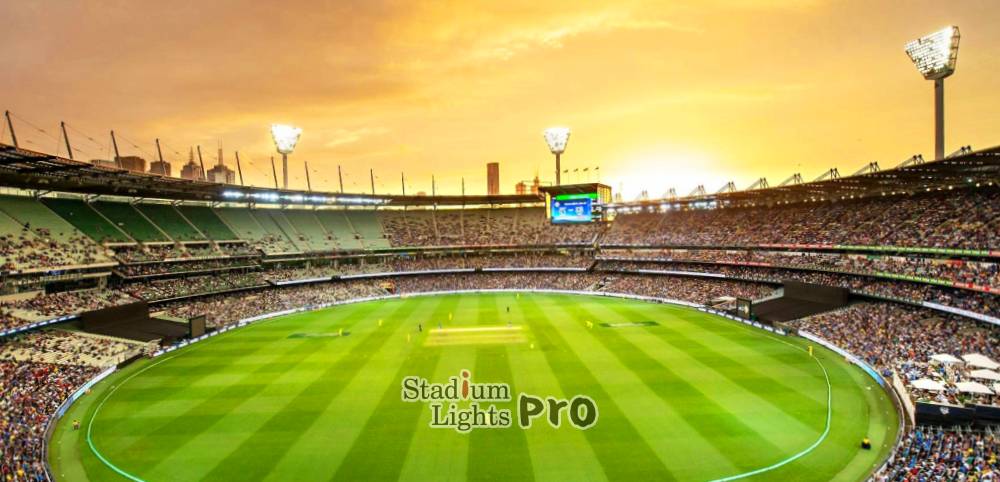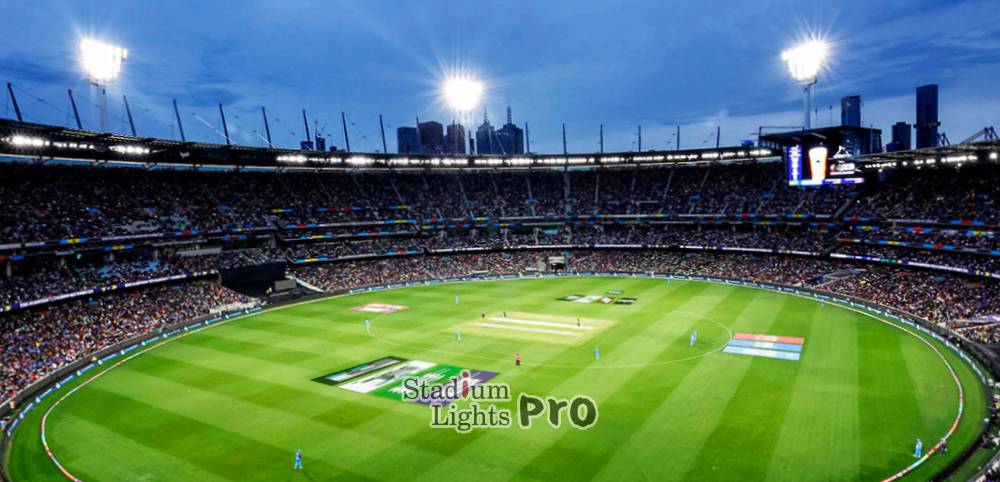Applying for cricket stadium lighting grants typically involves a multi-step process. While we can provide a general outline of the steps involved, specific requirements and procedures may vary depending on your location, funding organization, and the nature of the grant. It is recommended to research and contact relevant funding bodies or organizations in your region for accurate and up-to-date information. Nevertheless, here is a general guide:
Table of Contents
ToggleHow to apply for cricket stadium lighting grants?
1. Identify potential funding sources
Research and identify government agencies, sports organizations, charitable foundations, or private corporations that offer grants for sports infrastructure development or facility upgrades. Look for specific grant programs that focus on stadium lighting or sports-related projects. When researching and identifying potential funding sources for cricket stadium lighting grants, consider the following:
Where to apply for the lighting grants?
Government agencies
Start by researching government agencies at the local, regional, or national level that are responsible for sports development, infrastructure, or community funding. These agencies often have programs or grants designed to support the improvement of sports facilities, including cricket stadiums. Visit their websites, explore their funding opportunities, and review their eligibility criteria to determine if they offer grants for lighting projects.
Sports organizations
Look for sports organizations that are involved in cricket or sports development in your area. National or regional cricket associations, sports councils, or sports governing bodies may have funding programs dedicated to supporting infrastructure development, including stadium lighting. These organizations are often invested in promoting and enhancing the sport of cricket, making them potential funding sources for your project.
Charitable foundations
Research charitable foundations or trusts that have a focus on sports development or community enhancement. Some foundations specifically support sports facility upgrades or infrastructure projects. Look for foundations that prioritize community well-being, youth development, or sports participation. Check their grant programs to see if they consider funding requests for cricket stadium lighting projects.
Private corporations
Explore partnerships with private corporations or businesses that have an interest in supporting sports or community initiatives. Many companies have corporate social responsibility programs or grant opportunities that align with their values. Some corporations may offer grants or sponsorships that can be utilized for cricket stadium lighting improvements. Consider reaching out to businesses in your area to explore potential funding collaborations.
When reviewing these potential funding sources, specifically look for grant programs that focus on sports infrastructure development, facility upgrades, or stadium lighting. Some organizations may have specific initiatives that cater to these areas. Carefully review the eligibility criteria, funding priorities, and any requirements outlined by each funding source to ensure your cricket stadium lighting project aligns with their objectives.
The availability of funding sources may vary depending on your location and the specific circumstances. Stay up-to-date with local announcements, community newsletters, or online platforms that share information about grant opportunities in your area. Furthermore, consider networking with other sports organizations, facility managers, or individuals in the sports development sector who may have insights or connections to potential funding sources for your project.

2. Review eligibility criteria
When reviewing the guidelines and eligibility criteria of potential funding sources for cricket stadium lighting grants, it’s crucial to approach the process with attention to detail. Here’s a breakdown of the key considerations:
Read guidelines and eligibility criteria
Thoroughly examine the guidelines and eligibility criteria provided by each funding source. Take note of the specific requirements, application procedures, and deadlines. Understanding these guidelines is essential to determine whether your project is eligible for funding.
Align with priorities and requirements
Assess how well your cricket stadium lighting project aligns with the priorities and objectives of the funding organization. Look for information on the types of projects they typically support and any specific focus areas they have. Ensure that your project goals and outcomes align with the funding source’s mission and objectives.
Location, size, and scope
Some funding sources may have geographic restrictions or preferences. Verify whether there are specific regions or areas that they prioritize or exclude. What is more, consider the size and scope of your cricket stadium project. Some funders may prefer larger-scale projects with broader community impact, while others may be open to supporting smaller-scale initiatives.
Lighting system criteria
Pay attention to any specific criteria related to the lighting system itself. Funding organizations may have requirements concerning the type of lighting technology, energy efficiency standards, or lighting design principles they expect. Ensure that your project meets these criteria or can be adjusted accordingly to comply with their expectations.
Budget considerations
Take note of any budgetary restrictions or limitations outlined by the funding organization. They may have minimum or maximum funding amounts for projects, or they may expect a certain level of financial commitment from your side. Align your budget estimates and funding request with their guidelines to increase the chances of a successful application.
Additional requirements
Be aware of any additional requirements mentioned in the guidelines. These could include reporting obligations, evaluation criteria, or expectations for community engagement. Make sure you understand and can meet these requirements throughout the project lifecycle.
3. Develop a comprehensive project plan
Prepare a detailed project plan that outlines the need for improved lighting in your cricket stadium. Highlight the benefits of quality lighting, such as enhancing player performance, ensuring spectator safety, and enabling evening matches or events. Include information on the current lighting system, proposed upgrades, cost estimates, and anticipated outcomes. Here are key elements to include:
Introduction and background
Begin your project plan with an introduction to your cricket stadium and its significance within the community. Provide a brief overview of the current lighting system, including its limitations or shortcomings.
Need assessment
Clearly articulate the need for improved lighting in your cricket stadium. Identify the specific challenges or issues related to the existing lighting system, such as inadequate visibility, compromised player performance, safety concerns, or restricted playing hours. Support your assessment with data, observations, or feedback from players, officials, and spectators.
Benefits and impact
Emphasize the positive impact that quality lighting will have on various stakeholders. Highlight how improved lighting can enhance player performance, enabling them to track the ball accurately, make precise shots, and react effectively during matches. Discuss the safety benefits, such as reducing the risk of accidents and injuries. Showcase how better lighting will enable evening matches or events, thereby expanding opportunities for participation and attracting larger crowds.
Proposed upgrades and lighting design
Outline your proposed lighting upgrades and design plans. Describe the specific improvements you intend to make, such as installing energy-efficient LED lights, optimizing lighting placement, or incorporating advanced control systems. Explain how these upgrades will address the identified issues and enhance the overall lighting quality of the cricket stadium.
Cost estimates and budget breakdown
Provide a detailed breakdown of the project costs, including the expenses associated with purchasing lighting equipment, installation, electrical work, permits, and any other relevant expenditures. Present accurate cost estimates based on research and quotes obtained from suppliers or contractors. This demonstrates your thorough planning and financial accountability.
Anticipated outcomes and evaluation
Clearly define the expected outcomes and benefits resulting from the lighting upgrades. This could include improved player performance, enhanced spectator experience, increased participation in cricket, or economic benefits for the community. Discuss how you plan to evaluate and measure the success of the lighting project, such as through player feedback, attendance numbers, or energy consumption data.
Timeline and project management
Present a realistic timeline for the implementation of the lighting upgrades, indicating key milestones and deadlines. Highlight any dependencies or potential challenges that may arise during the project. Discuss the project management strategies you will employ to ensure smooth execution, such as coordinating with suppliers, engaging contractors, or overseeing the installation process.
Conclusion and support documentation
Summarize the key points of your project plan and reiterate the importance of securing funding for the lighting upgrades. Attach relevant support documentation, such as letters of support from players, coaches, or community organizations, as well as any other evidence that validates the need for improved lighting.

4. Create a budget
Develop a comprehensive budget for the lighting project, including the costs associated with purchasing and installing the lighting equipment, electrical work, permits, and any other relevant expenses. It is crucial to provide accurate and detailed cost estimates to demonstrate the feasibility of your project. Here are key points to address:
Lighting equipment
Research and identify the specific lighting equipment that will be needed for the project. Obtain quotes or estimates from suppliers to determine the cost of purchasing the necessary lighting fixtures, bulbs, or LED modules. Include detailed information on the quantity and specifications of the lighting equipment required.
Installation expenses
Estimate the costs associated with installing the lighting system. This may include hiring professional contractors or electricians to handle the installation work. Obtain quotes or bids from qualified service providers to calculate the installation costs accurately. Take into account factors such as labor fees, transportation, and any specialized equipment or tools needed for the installation process.
Electrical work
Consider the electrical infrastructure upgrades or modifications that may be required to support the new lighting system. This could include rewiring, circuit installations, or electrical panel upgrades. Obtain estimates from licensed electricians or electrical contractors to determine the associated costs.
Permits and regulatory requirements
Research the permits and regulatory requirements necessary for the lighting project. Identify any fees or costs associated with obtaining permits or complying with building codes, safety regulations, or environmental guidelines. Factor in these costs in your budget.
Miscellaneous expenses
Account for any other relevant expenses that may arise during the project. This could include costs for architectural or engineering services, project management fees, inspections, or contingency funds to address unexpected or unforeseen circumstances.
Cost breakdown
Provide a detailed breakdown of the estimated costs for each category mentioned above. Clearly list the individual line items and associated costs, creating transparency in your budgeting process. This breakdown will demonstrate that you have thoroughly considered all the cost factors involved in the lighting project.
Accuracy and validity
Ensure that your budget estimates are accurate and realistic. Obtain multiple quotes or bids from suppliers and service providers to validate the proposed costs. This will enhance the credibility of your budget and strengthen your application.
5. Gather supporting documents
Compile all the necessary supporting documents required by the funding organization, which may include proof of ownership or authorization to make changes to the stadium, financial statements, tax-exempt status documentation (if applicable), legal permits, and any other documentation they may request.
Proof of ownership or authorization
Include documentation that establishes your ownership or authorization to make changes to the cricket stadium. This could be in the form of property deeds, lease agreements, or letters of consent from the relevant authorities.
Financial statements
Prepare and submit financial statements that provide an overview of your organization’s financial position. This may include balance sheets, income statements, and cash flow statements. These documents demonstrate your financial stability and ability to manage funds effectively.
Tax-exempt status documentation
If your organization has tax-exempt status, provide the necessary documentation to validate this status. This could include a determination letter from the tax authority, such as the Internal Revenue Service (IRS) in the United States, or equivalent documentation from your country’s tax authority.
Legal permits and approvals
Gather any required permits, licenses, or approvals related to the lighting project. This may include building permits, electrical permits, environmental clearances, or any other documentation required by local or national regulatory bodies.
Project plans and specifications
Include detailed project plans and specifications for the lighting upgrades. This may involve architectural drawings, lighting design layouts, engineering reports, or any other technical documentation that outlines the scope and details of the project.
Contractor quotes or bids
Provide quotes or bids from contractors or suppliers involved in the lighting project. These documents validate the estimated costs and demonstrate that you have obtained competitive pricing for the required materials or services.
Support letters or endorsements
If applicable, include support letters or endorsements from stakeholders who recognize the importance of the lighting upgrades. This may include letters from local cricket associations, community organizations, players, coaches, or other individuals or groups who endorse the project.
Any other requested documentation
Review the funding organization’s guidelines and requirements carefully to identify any additional documentation they may request. Ensure you gather and provide all the necessary paperwork to meet their specific application criteria.
6. Submit the application
Follow the specific instructions provided by the funding organization to submit your application. This may involve filling out an online application form, submitting hard copies by mail, or a combination of both. Ensure that all required documents and information are included and that the application is submitted before the deadline.
7. Follow up and communicate
After submitting your application, follow up with the funding organization to confirm receipt and inquire about the review and decision-making process. Maintain open communication with the organization and be prepared to provide supplementary information or answer any questions they may have.
Confirmation of receipt
After submitting your application, reach out to the funding organization to confirm that they have received your application. This can be done through a follow-up email or a phone call. Request confirmation to ensure that your application is in their possession and that it is complete.
Inquire about the review process
Take the opportunity to ask about the timeline and process for reviewing the applications. Seek information on when you can expect a decision or if there are any specific milestones or stages in the review process. This will give you an idea of the timeframe and keep you informed about the progress.
Supplementary information
Be prepared to provide any additional information or documentation that the funding organization may request during the review process. Respond promptly and thoroughly to any inquiries they make. This demonstrates your responsiveness and commitment to the application process.
Maintain open communication
Stay in touch with the funding organization throughout the review period. If you have any questions or need clarification on any aspects of the application or the grant program, don’t hesitate to reach out to them. They will appreciate your proactive engagement and commitment to the process.
Professionalism and courtesy
When communicating with the funding organization, maintain a professional and respectful tone. Be courteous in your interactions and express gratitude for their time and consideration. Positive and professional communication can leave a favorable impression and enhance your chances of success.
Follow their instructions
Follow any instructions provided by the funding organization during the review process. This may include refraining from making excessive inquiries, respecting their specified communication channels, or adhering to any additional requirements they may have.
The review and decision-making process may take time, as the funding organization carefully evaluates each application. Patience and persistence are key during this stage. By maintaining open communication, being responsive to their requests, and conducting yourself professionally, you demonstrate your commitment and interest in securing the cricket stadium lighting grant.

Why apply for the lighting grants?
Applying for cricket field lighting grants can provide several benefits and advantages for your cricket stadium. Here are some reasons why you might consider applying for such grants:
Enhanced visibility and safety
Upgrading the lighting system in your cricket stadium can significantly improve visibility for players, officials, and spectators. Adequate lighting ensures that players can track the ball accurately, make precise shots, and react to game situations effectively. It also enhances safety by reducing the risk of accidents and injuries during matches or practice sessions.
Extended playing hours
Quality lighting enables cricket matches and training sessions to take place during evenings or in low-light conditions. This flexibility expands the opportunities for players to participate in the sport and improves scheduling options. It can also attract larger crowds, boosting the overall spectator experience and potentially generating more revenue for the stadium.
Hosting night events and tournaments
Upgraded lighting systems allow cricket stadiums to host night events and tournaments, including floodlit matches and evening entertainment programs. Nighttime events can attract a wider audience and create a unique atmosphere, enhancing the overall sports and entertainment experience.
Promoting the sport and community engagement
A well-lit cricket stadium can serve as a hub for community engagement and sports development. It can attract more players, encourage increased participation, and facilitate training programs for youth and amateur players. Improved infrastructure also reflects positively on the sport and the community, creating a sense of pride and encouraging greater involvement.
Economic benefits
Upgrading cricket stadium lighting can have economic advantages for the surrounding area. Hosting night matches or tournaments can attract more visitors, tourists, and fans, leading to increased spending on tickets, concessions, merchandise, and local businesses such as restaurants and hotels. This can stimulate economic growth and benefit the local community.
Sustainability and energy efficiency
Modern lighting systems often incorporate energy-efficient technologies, such as LED lights, which consume less electricity and have a longer lifespan. Upgrading to energy-efficient lighting not only reduces operational costs but also demonstrates a commitment to sustainability and environmental responsibility.
Conclusion
By identifying suitable grant opportunities, understanding the requirements, and crafting a compelling project proposal, you can effectively demonstrate the need for improved lighting and the potential impact it will have on players, spectators, and the community. Providing supporting evidence, developing a detailed budget, and seeking partnerships or endorsements can further strengthen your application.
Remember to submit your application before the deadline, follow up with the funding organization, and maintain clear communication throughout the process. While success is not guaranteed, following these tips can significantly increase your chances of securing the funding needed to enhance your cricket stadium’s lighting infrastructure and contribute to the growth and development of the sport in your community.
Contact us today for a complimentary consultation regarding the application process for cricket stadium lighting grants, as well as expert guidance on designing an optimal lighting system. Our team is ready to assist you in navigating the grant application requirements and providing insights on creating an effective lighting design that enhances visibility, safety, and the overall experience for players and spectators alike.

